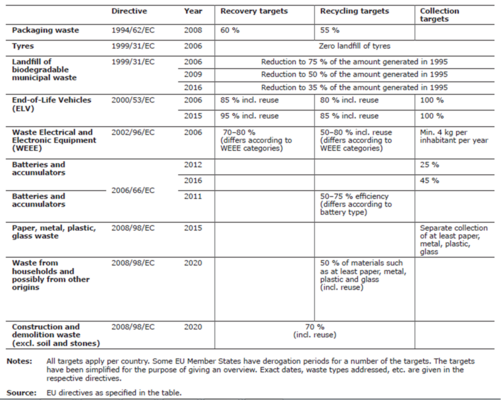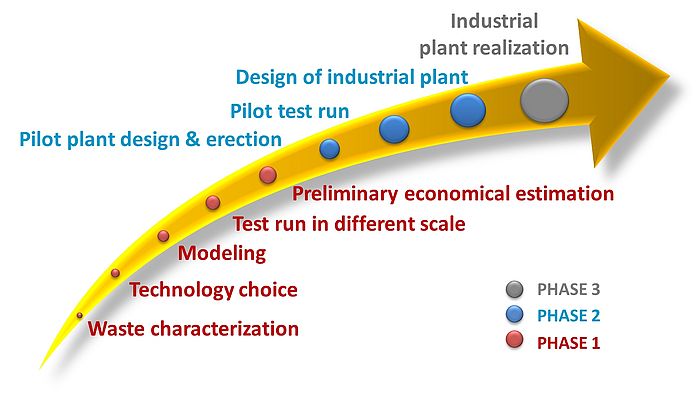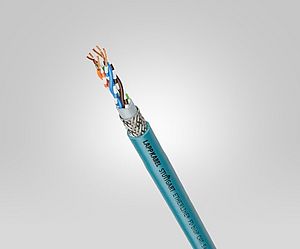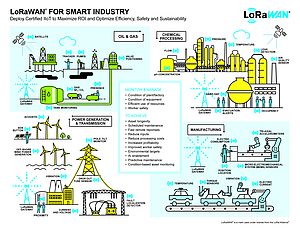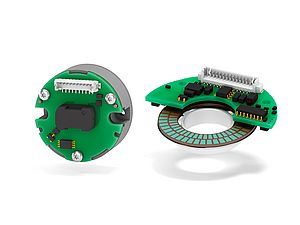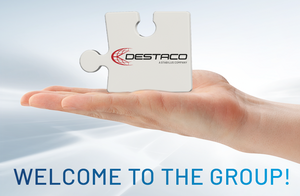Summary
The European economy uses huge amounts of natural resources: demand for materials is so strong that between 20 and 30% of the resources EU consume are now imported. At the other end of the materials chain, the EU economy generates more than five tons of waste per capita every year[1]. Therefore waste must be considered as a significant source for raw materials to decouple economic growth from resource consumption. With this objective, many EU and national policies have been recently launched to promote resource efficiency and to close resource use and waste loops[2],[3],[4],[5] .
Despite of these efforts the EU target, declared in the Sixth Environment Action Programme (6EAP) adopted in 2002, to become 'the most resource‑efficient economy in the world' and 'substantially reduce waste generation' has so far been only partially successful.
One of the reasons for this partial success is that while the link between resources use, waste and economic efficiency is well recognized at the macroeconomic level, in practice is not fully addressed up to the local level. An innovative approach must be developed: companies seeking to ensure regulatory compliance have to find that initiatives to increase recycling and minimise waste has a side benefit of improving overall efficiency and economic competitiveness. Nevertheless, to be a source of sustainable growth, the necessary prerequisite is to adopt really innovative technology, totally oriented to observance with the most advanced environmental policy.
Centro Sviluppo Materiali S.p.A. (CSM) - Rina Group is one of the main European private RTO (Research & Technology Organization) in the field of materials innovation and related manufacturing and utilization technologies for different industrial sectors such as steel, O&G and Energy & Transport. A further, more recent important field of interest of the Company is the development of innovative technologies for waste-to-material and waste-to-energy taking advantage of the expertise gained in the areas of high temperature process engineering and materials science. CSM competences are integrated in a well-established network of equipment suppliers.
The context
Waste generated within urban areas and by industries constitute an enormous reservoir of resources that, if properly managed and valued, can guarantee, in years, a sustainable and continuous supply of materials. In the European Union waste regulations are part of a comprehensive strategy that states a hierarchy in waste management. Such a hierarchy, reaffirmed by European Directive 2008/98/EC (Directive Framework), envisages the following order (Figure 1):
- to prevent as much as possible waste production;
- to support the reuse of suitable components;
- to support the recycling of materials not directly reusable, when bearable from the environmental point of view;
- to support energy recovery from material or residues;
- to put waste to landfill; this one should be an option of last resort and, at any rate, cannot be applied to waste with high Lower Calorific Value.
Multinational programs level (i.e. United Nations Environment Program ) targets for 2050 recycling has foreseen a percentages of 15% for the industrial waste, 34% for urban waste, and even 100% the electronic waste. Together with Member State initiatives, EU policies have acted as strong drivers of more recycling: between 1993 and 2008, targets for the separate collection, recycling and recovery of several waste streams have been introduced through EU Directives (Table 1).
The achievement of the target requires the treatment of waste, before disposal, through the use of the "best available techniques" but also of an innovative approach. The resource use, waste and economic efficiency can be linked considering three main pillars: "a distributed waste valorization concept (in analogy with distributed energy one), the industrial mining concept and the cross-sectorial valorization in an industrial symbiosis frame.
In the above described scenario CSM, headquartered in Rome - Italy, has been engaged in the development of innovative thermal technologies for waste and industrial residues treatments. Such treatments have the objective to recover materials, produce energy from waste with calorific value and to thermally destroy hazardous waste.
CSM innovation capability is based on its own know how, developed in fifty years of industrial projects on materials and high temperature processes in steel manufacturing, as well as in plant engineering and research on materials (metals and ceramic) and coatings for components of other industrial sectors as power generation, transport and defense.
The CSM approach at the sustainable waste valorization
CSM focus the R&I efforts on small/medium size solutions believing that waste management is a local challenge with a global impact. The technologies developed are hence targeting medium sized community managing specific waste in the range of 15000-50000 t/y, such as industrial consortia, hospitals, mountain communities, agricultural production centers, waste management companies.
In doing that CSM developed the capability to approach the waste valorization starting from different levels of development, from the feasibility study up to plant design in relation to the customer needs and goals. High quality laboratories and pilot plants of significant scale allow CSM to carry out R&I projects which typically consist in three phases: (i) feasibility study based on laboratory activities; (ii) technological development through the realization of a pilot plant carrying out experimental campaigns and economic analysis; (iii) scale-up and setting-up of the industrial plant. The final optimized solution is very often a system which integrates innovative technologies with commercial equipment (figure 2).
The general approach adopted by the CSM is based on selection, customization and cost-effective synergic link of different technologies in relation to the waste characteristics and the local scenario for the use of valorized waste and/or use of produced energy. CSM has developed innovative waste treatment technologies and gained experience on a wide typology of waste and industrial residues, both organic and inorganic, including ASR (automotive shredder residue), plastic waste, oily sludge, PCB (Polychlorinated Biphenyls) containing oils, asbestos, fly ashes from municipal solid waste incinerators. In this context pyro-gasification technology and plasma torques are the two reference technologies.
______________________________________________________________
[1]Report published by the European Environment Agency (EEA) Material resources and waste - 2012 update - www.eea.europa.eu/publications/material-resources-and-waste-2014
[2]EC, 2008. Directive 2008/98/EC of the European Parliament and of the Council of 19 November 2008 on waste and repealing certain Directives
[3] EC, 2011a. European Commission, Roadmap to a Resource Efficient Europe. COM(2011) 571 final, Brussels, 20.09.2011
[4]Sustainable Process Industry through Resource and Energy Efficiency (SPIRE) Public-Private Partnership (PPP)- www.spire2030.eu/about-a-spire
[5] The European Innovation Partnership (EIP) on Raw Materials - ec.europa.eu/eip/raw-materials/en/content/european-innovation-partnership-eip-raw-materials



